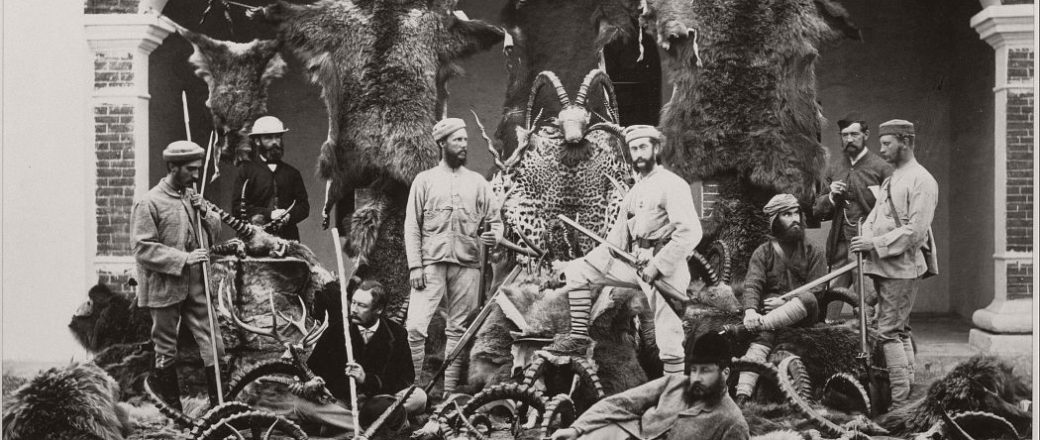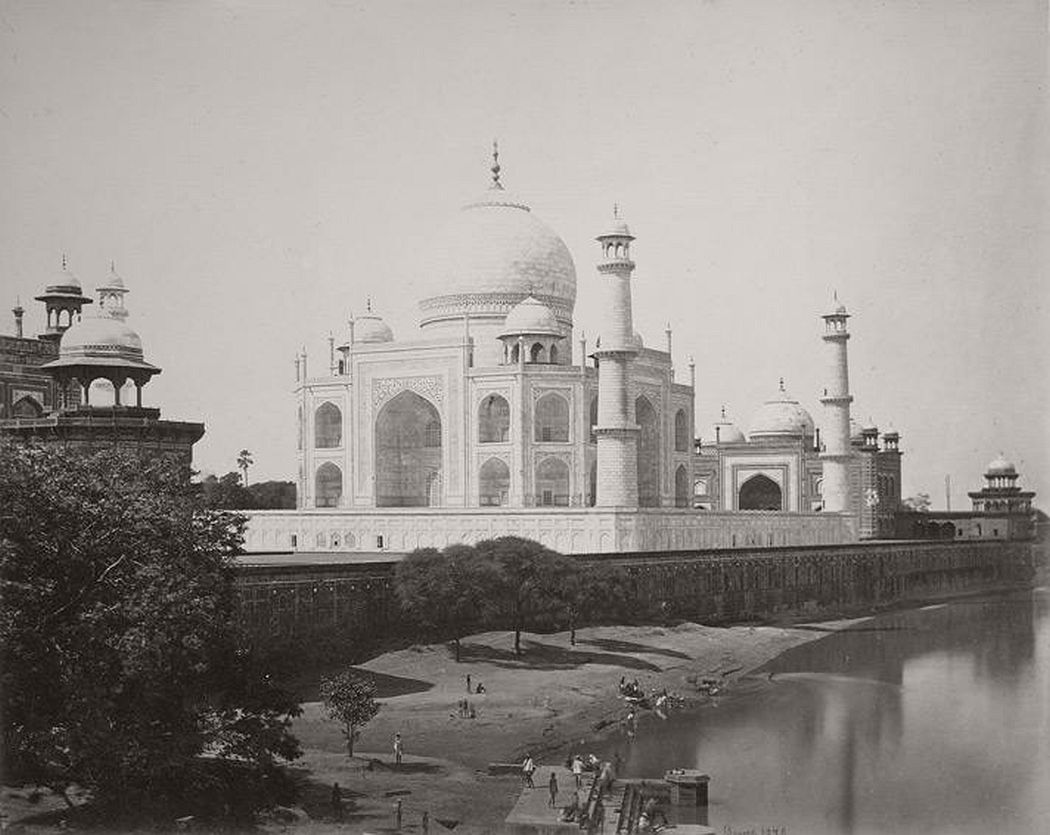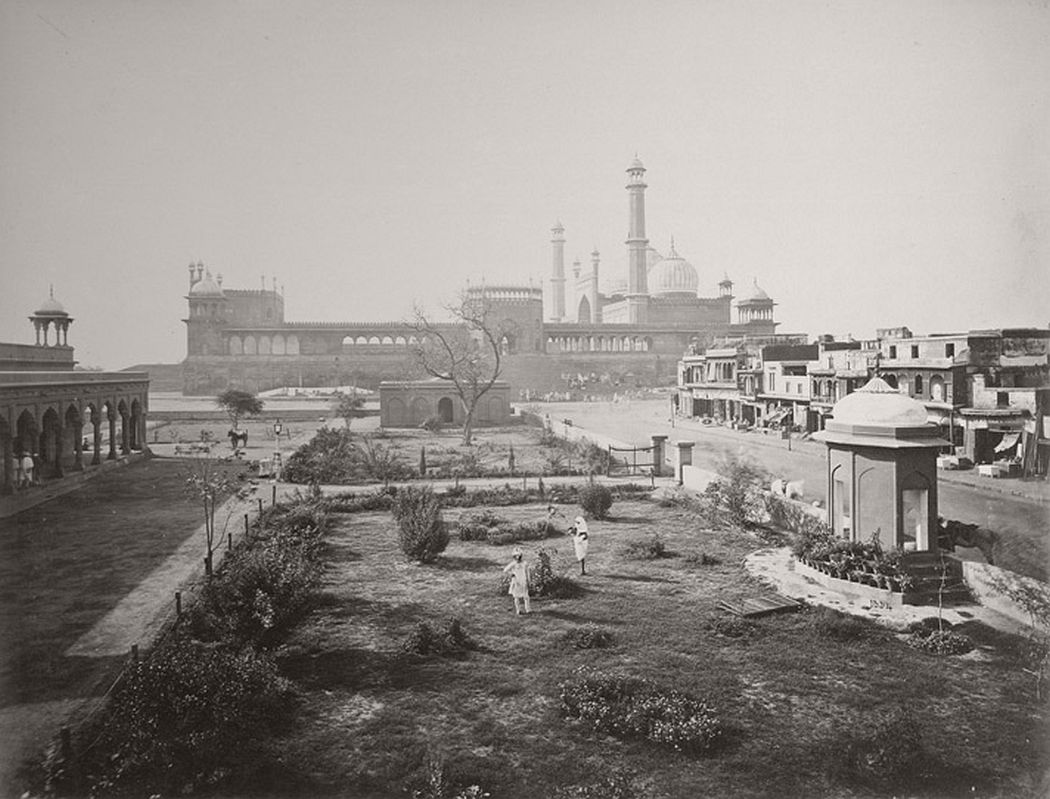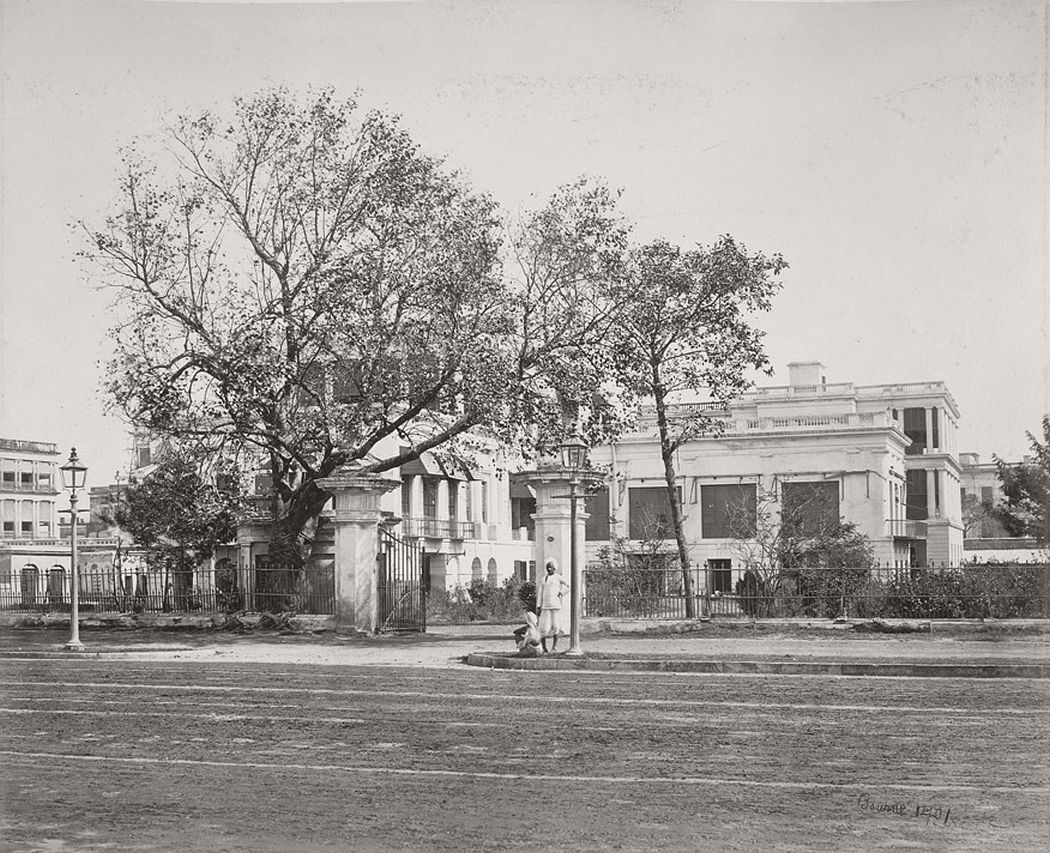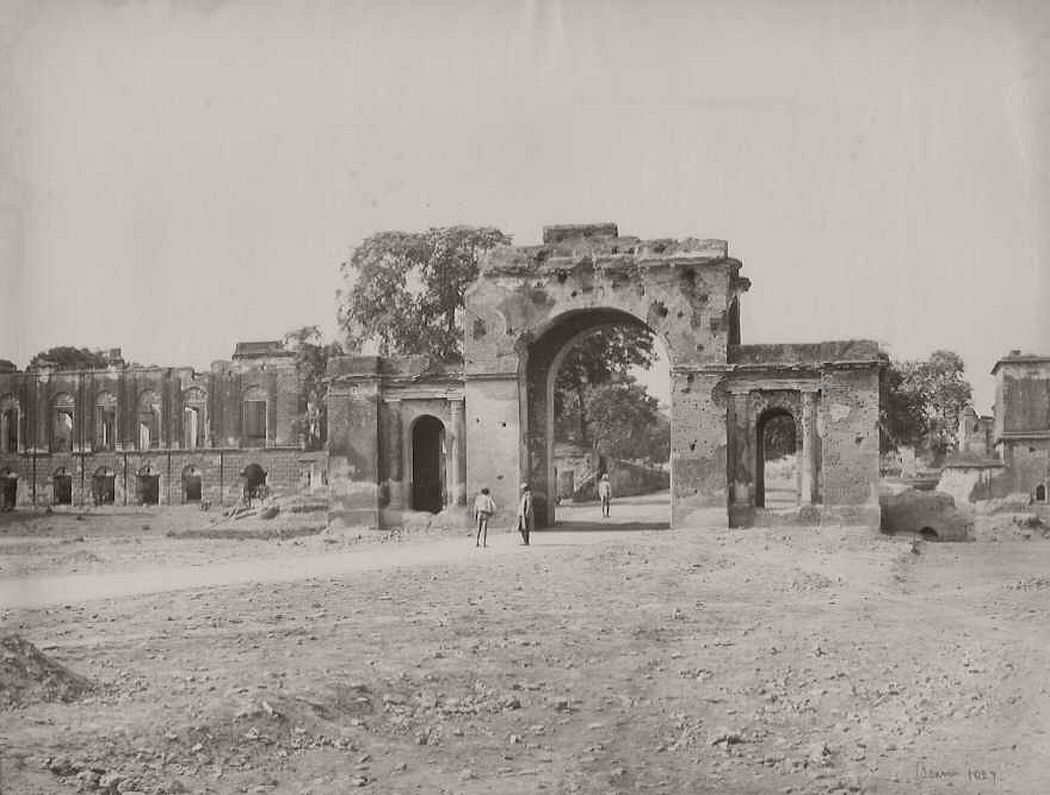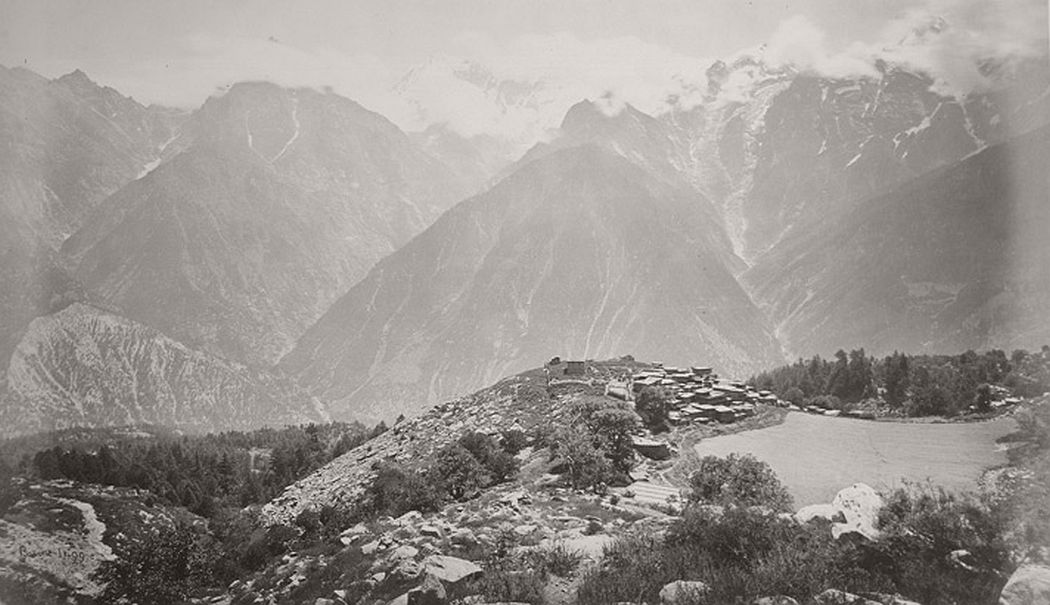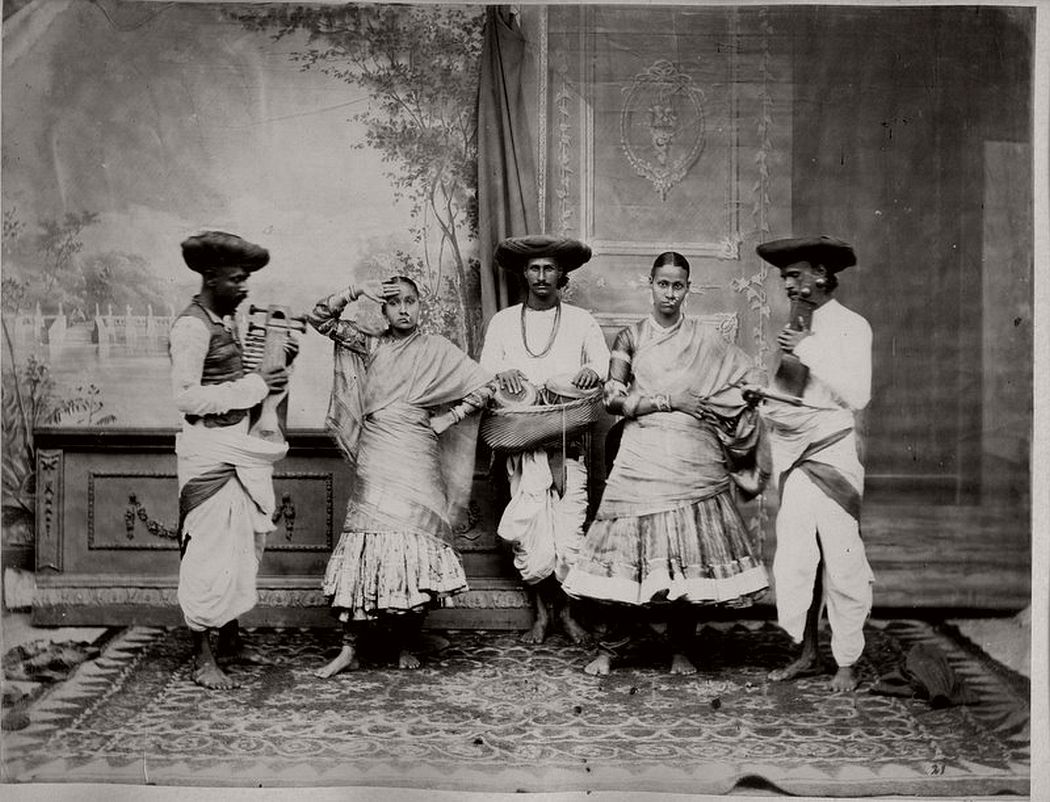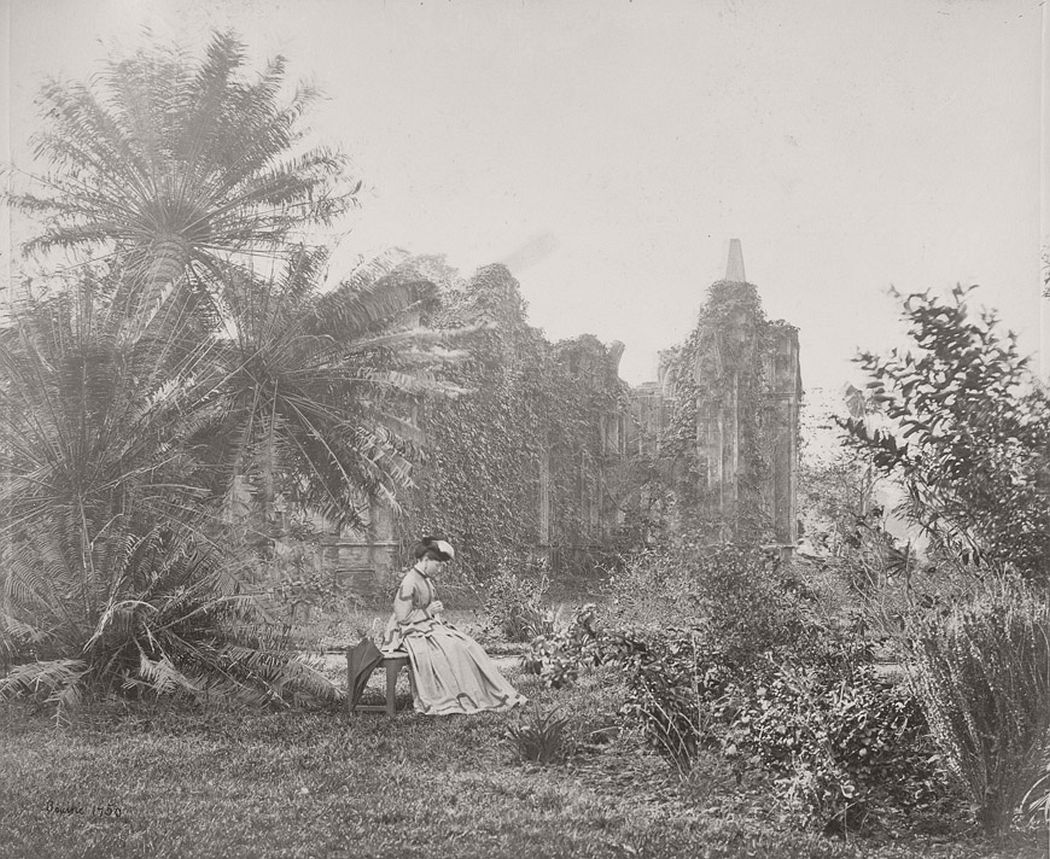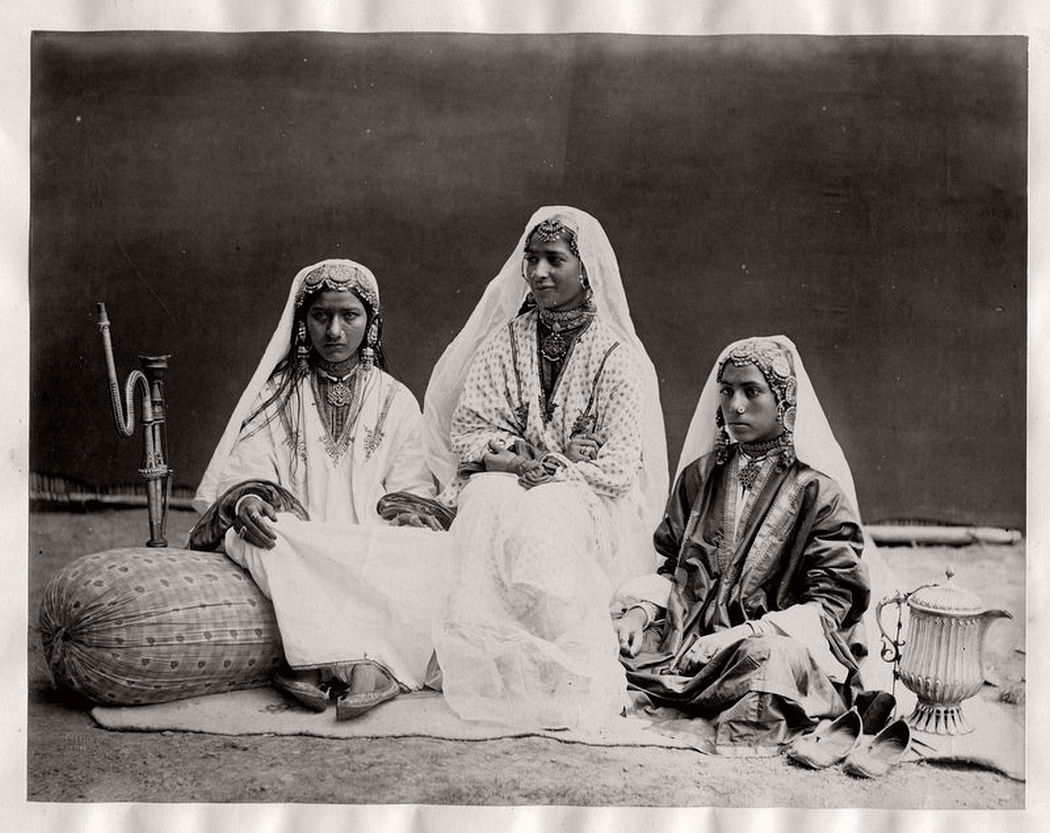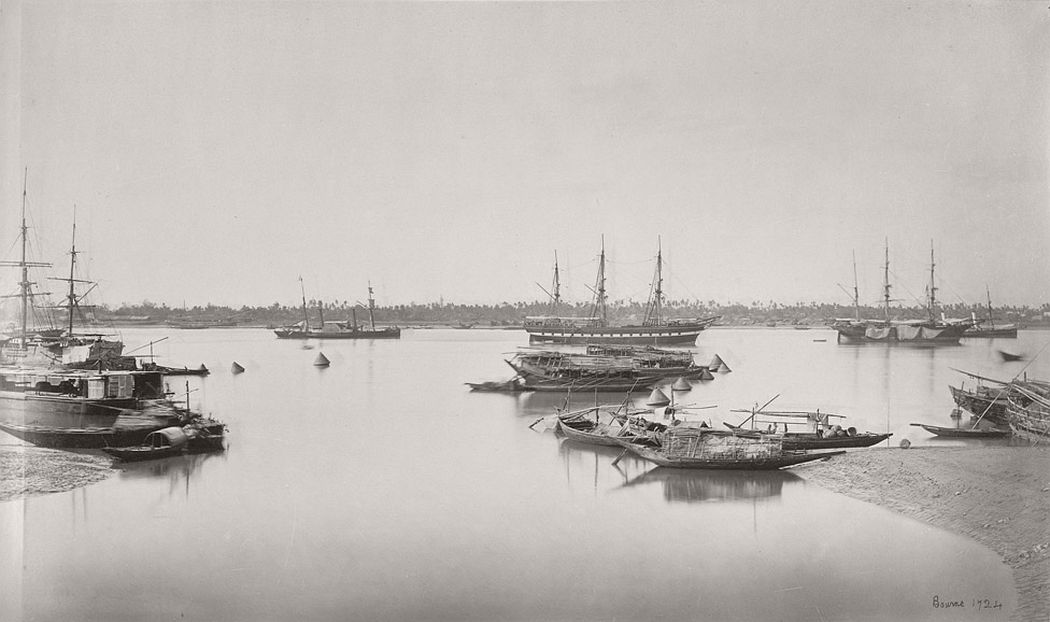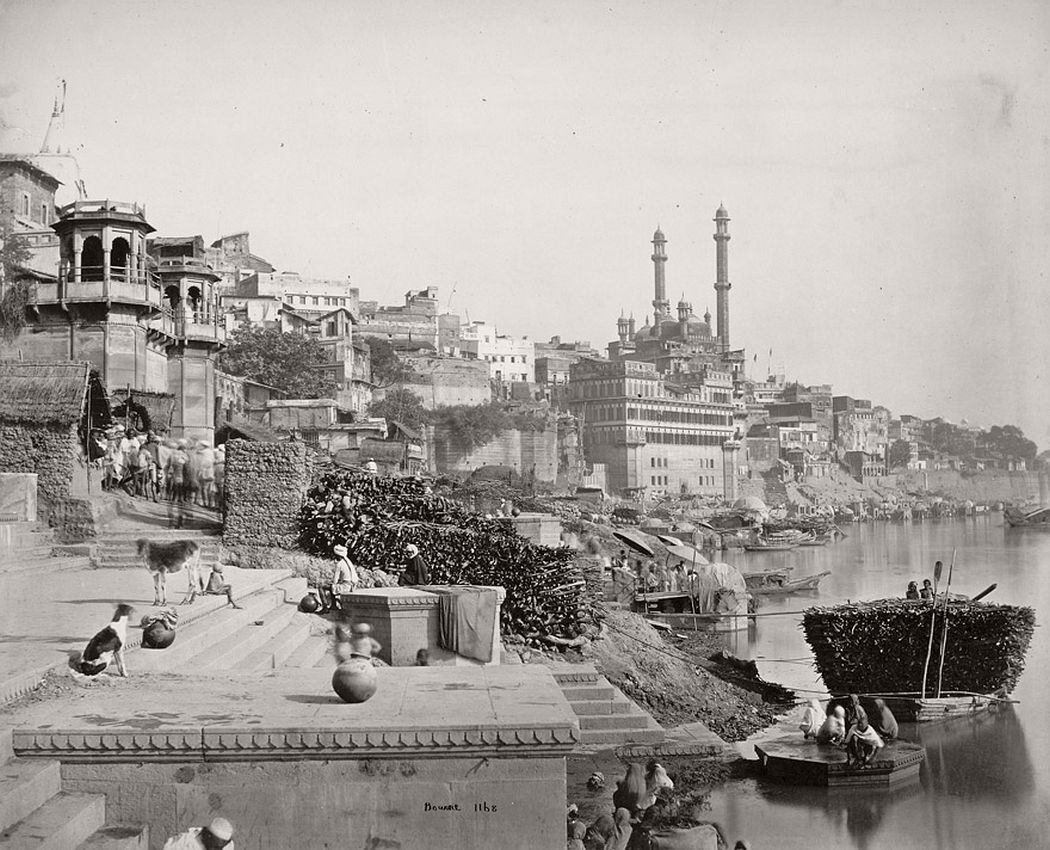Samuel Bourne (1834 – 1912) was a British photographer known for his prolific seven years’ work in India, from 1863 to 1870.
His name is synonymous with British-Indian photography and he is the most researched and acclaimed colonial photographer. His work gave birth to a studio, Bourne & Shepherd, which still operates in Calcutta. Bourne’s photographs posses a luminescent quality that exemplifies classic Raj photography though ironically he only spent six years in India. Upon his arrival in Calcutta in 1863 he brought with him the chemicals to make albumen photographs; newly invented, they were the first easily mass reproducible photographs. Newspaper advertising contributed to the prosperity of Bourne photography as is allowed him to sell his work to widely dispersed collectors. Bourne died in Nottingham England in 1912.
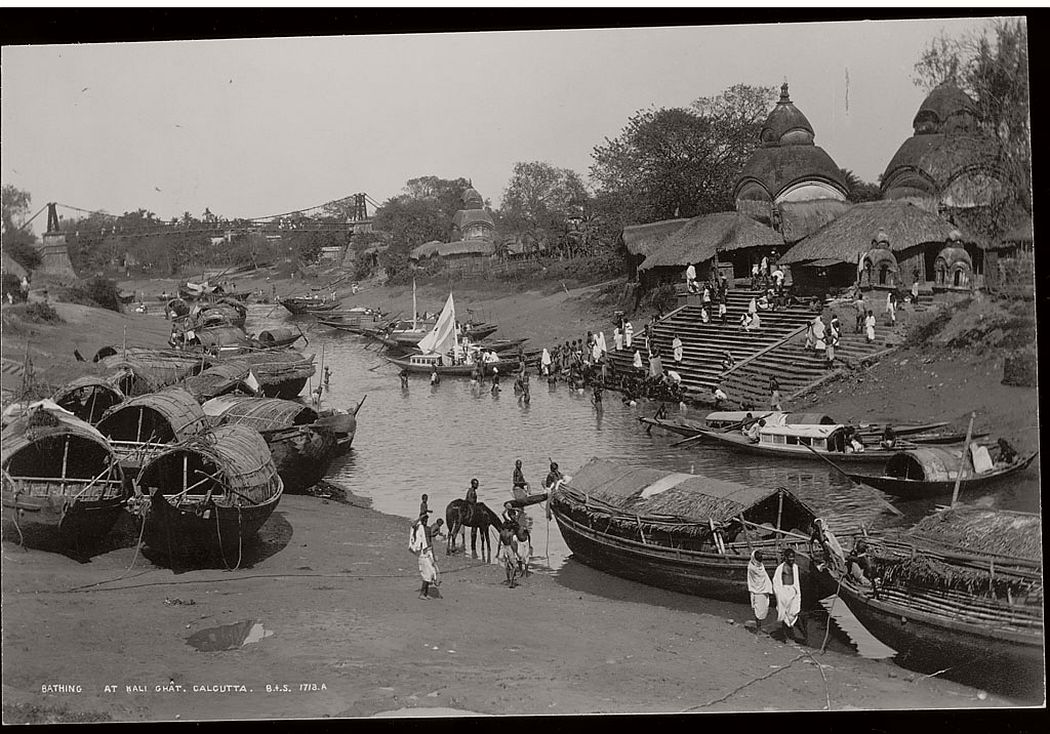
A group of people bathing at Kalighat near boats on river and ashore. Suspension bridge in the distance. by Samuel Bourne
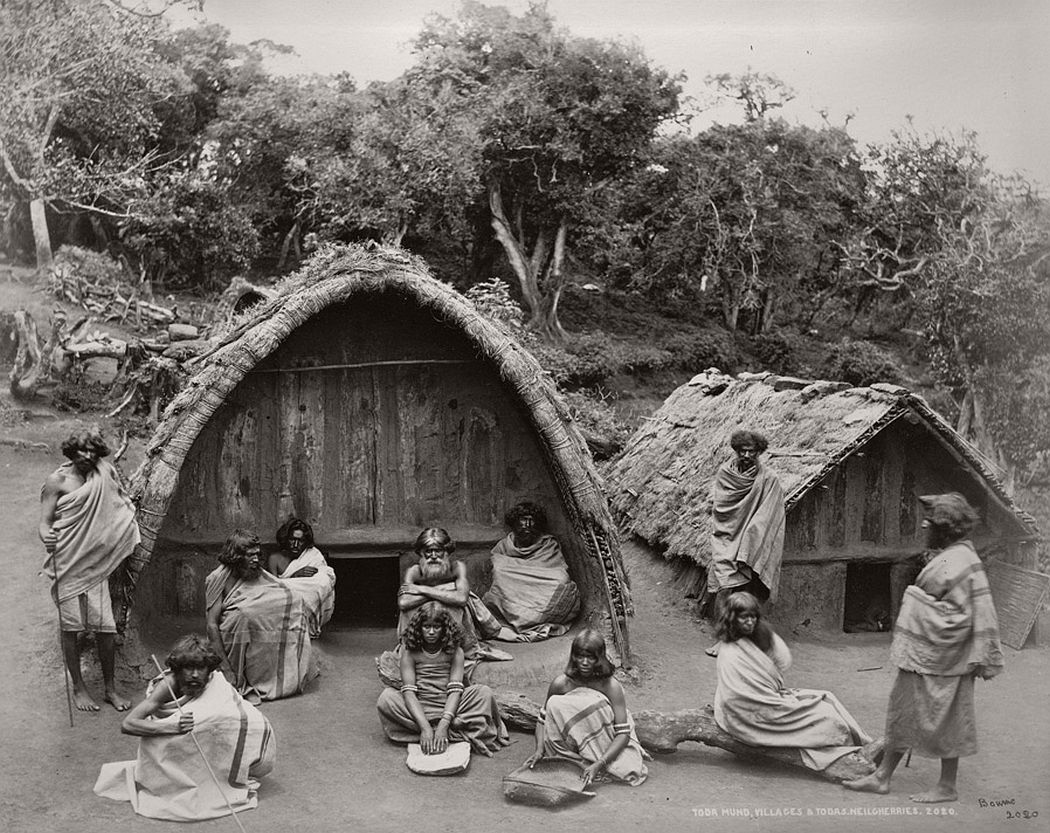
Photograph of Toda mund (hamlet) and barrel-vaulted houses in the Nilgiri Hills in Tamil Nadu. Samuel Bourne, 1869.

